As a bit of a bread enthusiast (or mad fanatic), not only looking to learn the beautiful skill of bread making, but also to expand my repetoire of lunches beyond soup, I’ve been thinking for ages about having a go at making pita breads. I must admit that I’ve weirdly found the prospect a bit daunting, I’m not too sure why, I think it has something to do with the apparent magic involved -that you can roll out a flat-bread, cook it, and end up with a magnificent pocket of bread-y goodness waiting to be filled with a delicious chickpea filling (actually any filling, the mention of chickpeas is a blatant hint at what’s to come in Friday’s post…)- and more specifically the fear that the magic wouldn’t happen for mine.
As has happened numerous times over the course of my bread-making adventures, whatever weird illogical fear dictated my longstanding pita-procrastination proved to be just that, weird and illogical. As always with my bread making endeavors, the process of making pita bread left me completely content and satisfied, and the ensuing lunch made from them was more delightful for it.
Pita is a yeasted flat-bread. When rolled thinly and then cooked on a hot surface (they can be cooked in the oven or on a stovetop), the sudden activation of the yeast, combined with the production of steam within the dough causes the dough to puff up creating its distinctive pocket. Magic!!
These lovely breads have been made, in one form or another, throughout Middle Eastern, Mediterranean and Balkan regions for centuries and, according to wikipedia, probably originated in Mesopotamia in 2500 BC.
As this was my first attempt at them I decided to make my pita bread according to tradition, using wheat flour, and as we have a perpetually hot stove top with our rayburn, I cooked them directly on it, but I have found a oodles of different recipes and methods using other flours, and even sourdough! I’m really excited to try out these methods soon, and once my sourdough starter is ready there will be no stopping me!!
For today though, here’s a classic whole wheat pita bread recipe.
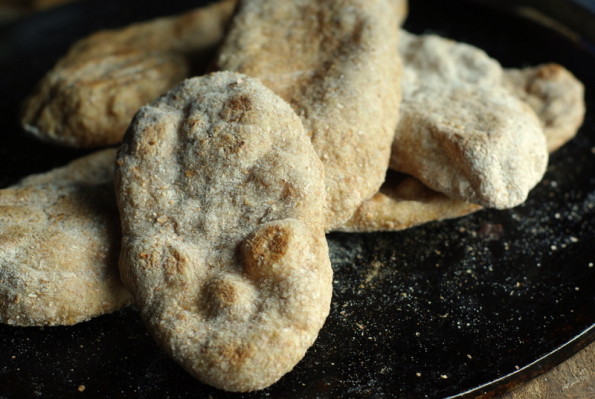

- 250g or 2 cups strong whole wheat flour
- 1/2 Tbsp salt
- One 7g packet of instant yeast
- 180ml or 2/3 cup of tepid water
- 2 tsp oil
- In a large bowl measure out the flour and add the salt to one side and the yeast to the other.
- Add the oil and water to the dry ingredients and start to squash the mixture together with your fingers until it forms a rough dough.
- Turn the dough out onto a lightly oiled work surface and knead it for about 10 minutes until the dough is smooth and has formed a smooth skin. Conversely you could do this in a mixer fitted with a dough hook.
- Place the dough in a large bowl and cover with cling film or a clean tea towel. Leave it to rise until doubled in size, about 2 hours.
- Twenty minutes before the end of the rising time, heat a griddle or heavy frying pan over medium-hot heat.
- Tip the risen dough onto a lightly floured surface and fold the dough over, squashing it down with your knuckles until all of the air is knocked out.
- Divide the dough into eight equal pieces and roll each piece into a ball.
- Working with a rolling pin flatten the balls one at a time into ovals about 1/2cm thick.
- Once the griddle is hot, place one of the flat breads on top and cover with a large saucepan lid (big enough that it won’t touch the bread,and will give it ample room to puff up. Some recipes don’t call for the use of a lid at all, so you could try it without if you’d like too). Leave the pita to cook for about 4-5 minutes on the first side. The pita should be golden brown with a few darker patches on the bottom and have puffed up quite a bit. Flip the pita over and cook it for a further 4 minutes or so on the second side until it too is golden brown.
- Repeat with the remaining pitas, wrapping the completed ones in a clean dish towel as you go to keep them soft.

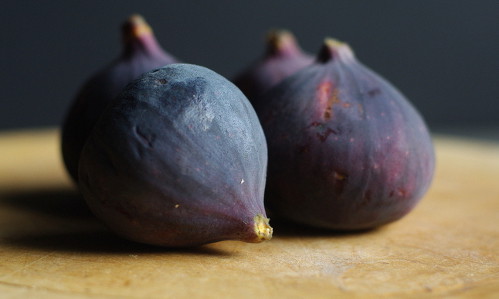
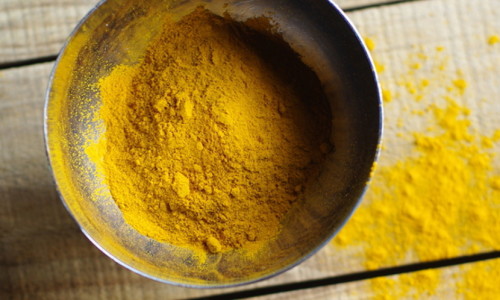
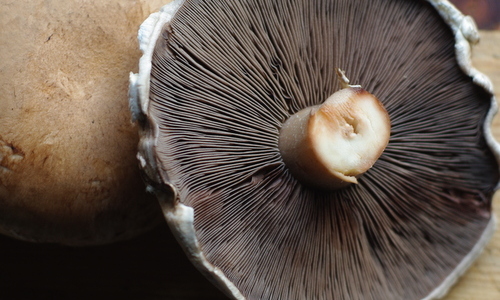
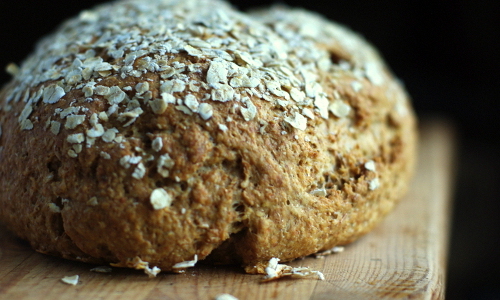
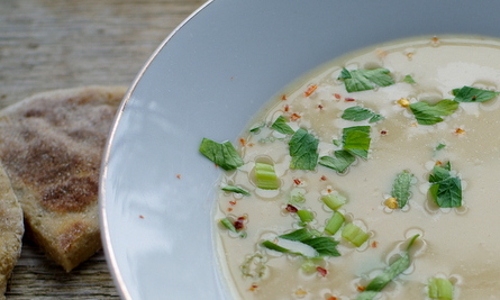
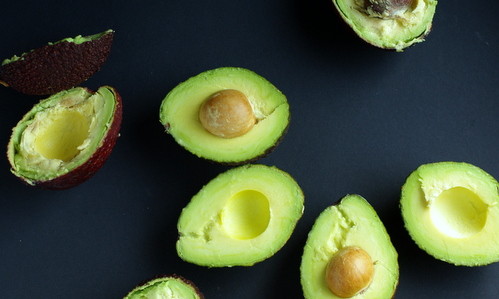
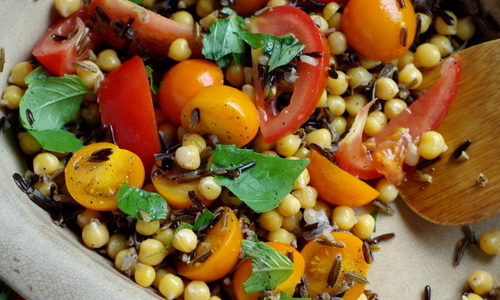
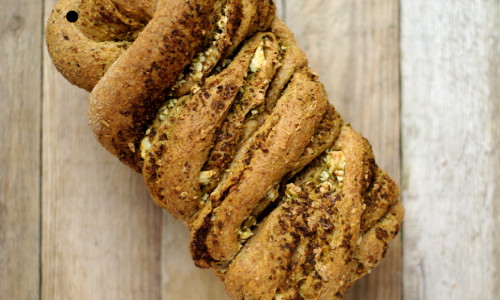
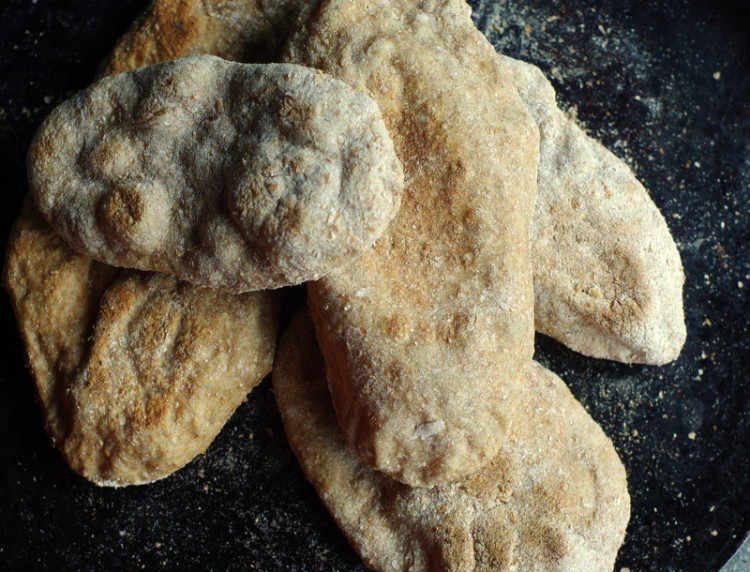
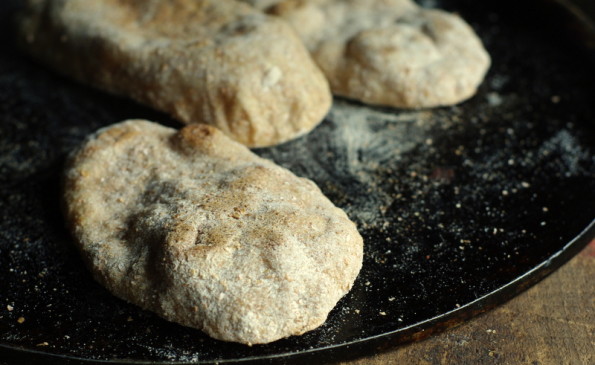
I’ve always found my home made pita bread heavy and not as soft as commercially available. Looking forward to trying yours here. Thank you!
Thank you! I hope you like them! I’d love to hear what you think!!
Nicki